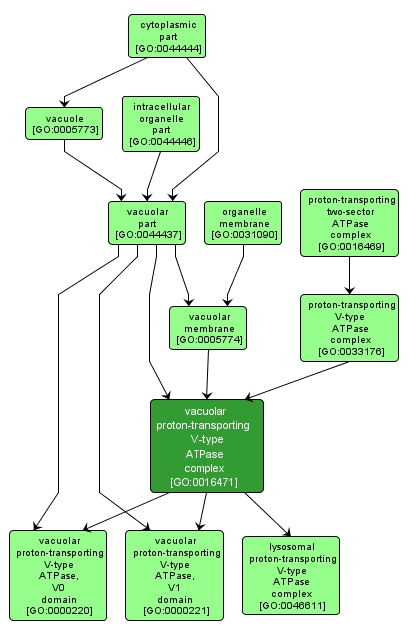GO TERM SUMMARY
|
| Name: |
vacuolar proton-transporting V-type ATPase complex |
| Acc: |
GO:0016471 |
| Aspect: |
Cellular Component |
| Desc: |
A proton-transporting two-sector ATPase complex found in the vacuolar membrane, where it acts as a proton pump to mediate acidification of the vacuolar lumen. |
Synonyms:
- vacuolar hydrogen-translocating V-type ATPase complex
|
|

|
INTERACTIVE GO GRAPH
|














